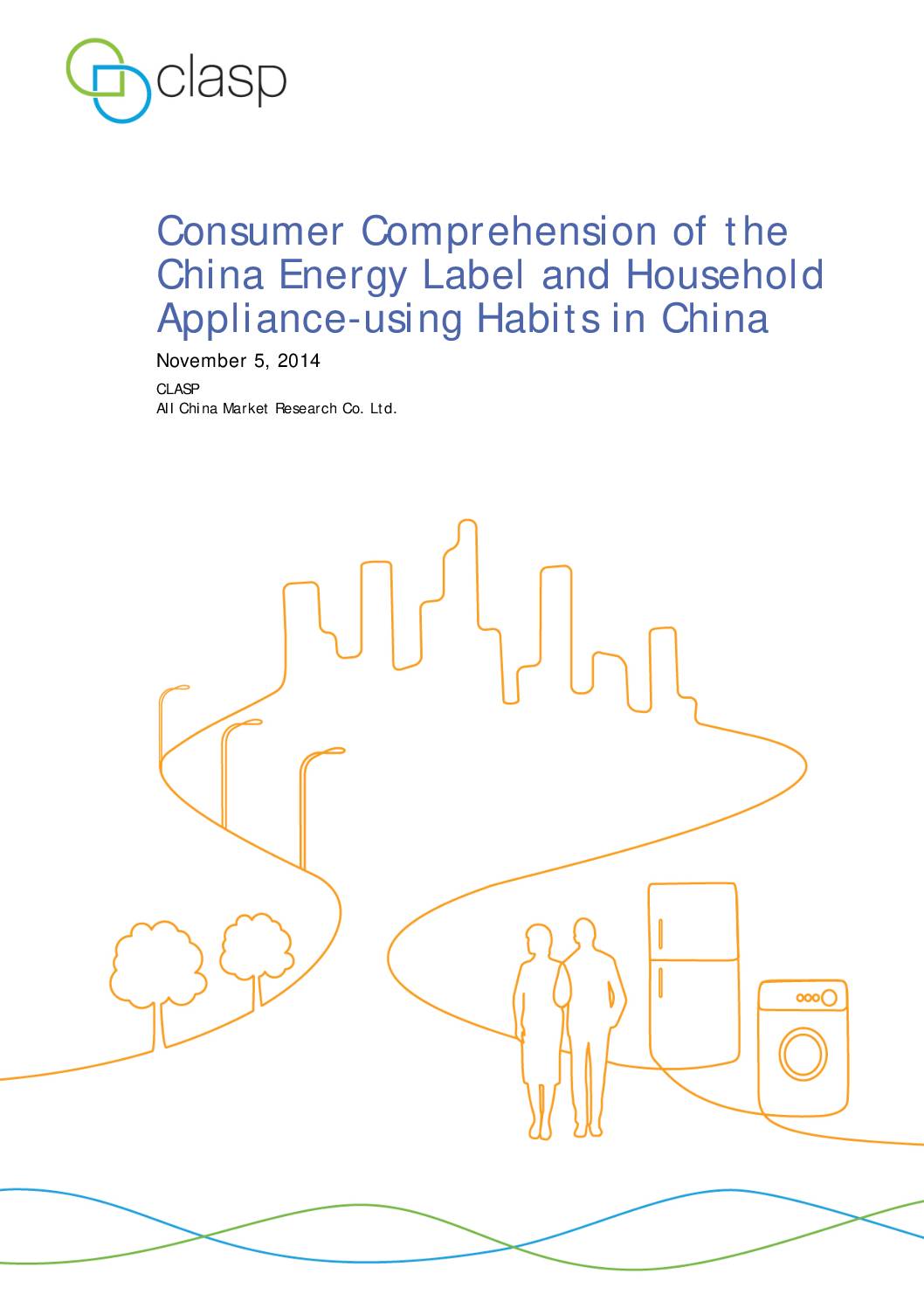A growing economy and accelerating urbanization means that demand for household appliances in China is increasing, as is the amount of energy consumed by appliances. The Chinese Government has long recognized the energy-savings potential of appliances, having implemented minimum energy performance standards (MEPS) since the 1980s and launched the mandatory China Energy Label (CEL) program in 2005. The CEL is a highly visible component of China’s efforts to transform the market towards highly efficient appliances. Furthermore, the CEL is gaining exposure as the program expands to cover more products and consumer demand for products increases. As more consumers become aware of the CEL, and reference it in their purchasing decisions, it is important to ensure that the label conveys accurate information clearly and effectively.
In order to assess how well consumers understand the CEL, and how they typically use their home appliances, CLASP collaborated with All China Market Research Co. Ltd. (ACMR) on a comprehensive survey of Chinese urban consumers that explored their general understanding of the label, its overall design, and specific label information for nine types of appliances. The study also included a diary-keeping component that tracked usage habits – such as frequency and duration of use – for typical appliances in urban Chinese households.
The results of the study, shared with the China National Institute of Standardization (CNIS) and National Development and Reform Commission (NDRC), reveal opportunities for CNIS to improve both the effectiveness of the CEL and the accuracy of the data that labels provide. The survey indicates that more than 97% of urban consumers polled claimed to have seen the CEL before, and that about 75% correctly understand how the labels differentiate between efficient and inefficient products. These findings indicate that education and promotional programs have been successful in raising awareness of the labeling program, but also that further efforts are needed to increase consumer comprehension. To that end, the study offers these and other suggestions to policymakers:
Improve the readability of information on the CEL: While technical parameters are the most important aspect of the CEL for consumers, they are not always correctly understood. Simpler, more reader-friendly terms, as well as a reduction in complex technical content, could make the label more effective.
Add information regarding consumption and savings to the label: With the data on appliance-usage habits collected in this study, typical household energy consumption can be calculated and used to derive the monetary savings of more efficient products. This information is more direct and relevant for consumers.
Revise MEPS, test procedures, and energy savings estimates based on robust, accurate appliance usage data: To effectively push the market towards energy efficient products, MEPS and CELs should be designed based on realistic energy savings estimates, and test procedures should be closely aligned with how appliances are used in real-life conditions.
This study was conducted for CLASP by All China Market Research Co. Ltd., and authored by Yang Yu.
Share this

Sectors: Equipment and appliances, Industry, Renewables
Country / Region: Asia, China
Tags: efficiency labelings, efficient appliances, energy, energy input labelings, home appliances, minimum energy performance standards, performance standards, urbanKnowledge Object: Publication / Report
Published by: CLASP
Publishing year: 2014
Author: CLASP, All China Market Research Co. Ltd.
